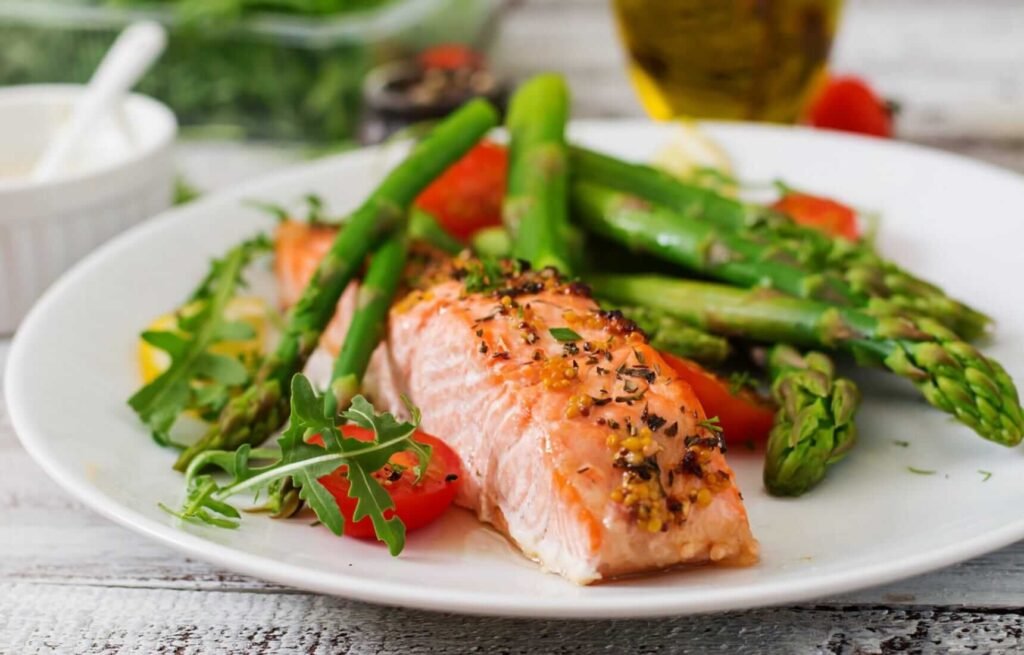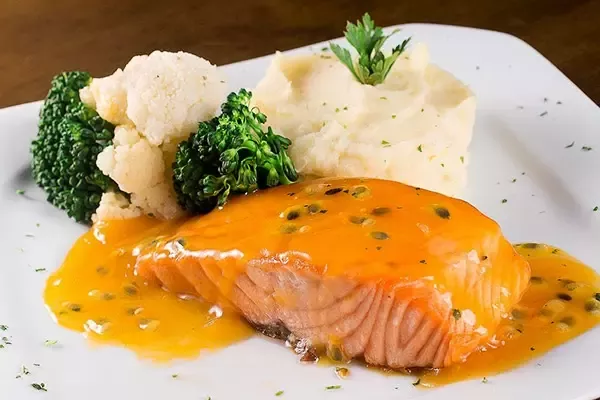
Salmon is a fantastic fish to eat, and many people like to have it for dinner. However, you may not know what side dishes go best with salmon.
This blog post will present some great recipes that work well with salmon so that you can make delicious meals at home.
Fish is often served alongside other dishes at dinner but on its own can get boring really quickly.
Here are some ideas for what to eat with salmon that might help break up the monotony of fish all by itself:
Salmon and avocado sandwich:
- Mix fresh, ripe avocados with some lemon juice.
- Slice a whole grain bagel in half and toast it lightly on both sides.
- Spread a layer of the savory mixture on one side before topping with slices of salmon.
- Drizzle more sliced avocado or lime juice to taste before serving
Homemade tartar sauce:
- Combine all ingredients together and mix thoroughly until well combined instead of using store bought condiments for your fish dishes.
- This will add flavor while also giving you control over what goes into the dish so that you are better able to tailor it towards your own tastes as well as those around you who might have food allergies or dietary restrictions.
Shrimp and avocado toast:
- Cook some shrimp only until they are pink.
- In the meantime, slice an avocado and toast your bread slices or if you want to be a little more fancy, grill them on both sides with olive oil in a pan before adding the toppings.
Purple cabbage slaw:
- Slice purple cabbage thinly then grate carrots into small pieces.
- Mix together with mayonnaise until all ingredients are totally combined, this will work great for dipping hot cooked salmon too.
Broiled salmon and roasted vegetables over brown rice or quinoa pilaf:
- In a small pot, put some water and bring it to boil.
- Cover with lid on medium heat until the water is boiled again which takes about 15-20 minutes or so depending for the amount of rice you are cooking.
- Add in one cup of brown rice (or quinoa) and mix well – now add salt, pepper, olive oil then transfer mixture into baking dish.
- Place salmon skin side up over top and broil for five minutes before adding vegetables like asparagus spears, zucchini slices, eggplant rounds etc.
What is the best way to eat salmon?

Salmon is a great choice of fish to cook with because it’s rich in protein and Omega-three fatty acids. Salmon can be sautéed, pan fried or grilled; the cooking method depends on whether you want a crispy skin or not.
The key thing about salmon is that you need to eat it just like any other meat – use salt, pepper and olive oil for seasoning as well as some lemon juice squeezed over before eating.
It’s best served with vegetables like spinach and broccoli but there are lots of side dishes such as risotto, rice noodles or jasmine rice which will work nicely too.
Whether you grill it, bake it, or poach it, salmon is a deliciously healthy protein source.
However, not all methods of cooking are created equal and depending on your taste preferences you may want to experiment with different ways of preparing this tasty fish.
The most traditional way to cook salmon is grilling.
This method takes about 10 minutes per side over medium heat and can be done either indoors or outdoors.
Another popular method for cooking salmon is baking in the oven which typically takes around 20-30 minutes at 350 degrees Fahrenheit until the desired doneness has been reached.
Finally there’s poaching which requires simmering in a liquid such as vegetable broth for anywhere from 3-5 minutes each side depending on how thick your fillet is cut up.
What flavors go well with salmon?

If you’re looking for some easy ways to spice up your salmon, try experimenting with a variety of different flavors.
From teriyaki to lemon pepper, there are tons of options out there that will complement the flavor of the fish.
Let’s go over some ideas for what types of spices and sauces work well with salmon. There are some things you can do before choosing which one to use though.
First, make sure to figure out what type of sauce or seasoning you want on your dish and then think about how strong the flavor should be. A light taste would work better if you’re adding it in addition to other spices, while more intense flavors should only be used as the main ingredient.
Teriyaki sauce:
- mix soy sauce, rice vinegar, brown sugar and just a pinch of garlic powder together to make this delicious restaurant-worthy salmon dish.
- To kick it up another notch add some chopped green onion or ginger for an extra zing.
Lemon pepper seasoning:
- This is one of my personal favorites because the acidity from the lemon complements so well with the rich flavor of cooked salmon.
- Combine ground black pepper, crushed red peppers, salt and lemon juice together in a bowl then pour over your fish fillets before baking them in the oven until they turn crispy on top but not dry inside.
Honey mustard dipping sauce:
- Mix honey into plain yogurt, add a pinch of garlic powder, salt and pepper.
Mustard sauce:
- Combine brown sugar, honey with Dijon mustard for this savory alternative that is great served over your salmon fillets before grilling them or pan-searing in the oven.
Tips for storing salmon
Salmon is a delicious fish that can be prepared in many different ways.
Salmon tastes great and is loaded with healthy fats, vitamins, and minerals.
But what happens when you are done cooking the salmon? How should it be stored to last for days or weeks?
When purchasing fresh salmon, it is important to inspect the fish for shrinkage and other signs of deterioration. The flesh should be firm with a pink or orange coloration that has not faded from exposure to light.
If these factors are present, this indicates that the meat will taste good when cooked but if they are absent, then chances are low that the fish was caught recently and may have spoiled by now or provide an unpleasant eating experience.
One of the best ways to store cooked salmon is by freezing it.
The trick here is just how long you want your salmon to last because there are so many options. If you want your frozen salmon to last longer than a day or two, then freeze it raw by packing it tightly in freezer bags without any air inside of them.
This way ensures that no bacteria will grow on your food while also keeping ice crystals from forming on the outside of the meat which would cause freezer burn.
If you want your salmon to last from a few days to about two weeks, then freeze it cooked by packing it tightly in freezer bags without any air inside of them or vacuum-sealing the meat first and then freezing.
This will help ensure that no bacteria grow on the food while also keeping ice crystals off the outside so that there is less chance for freezer burn.

